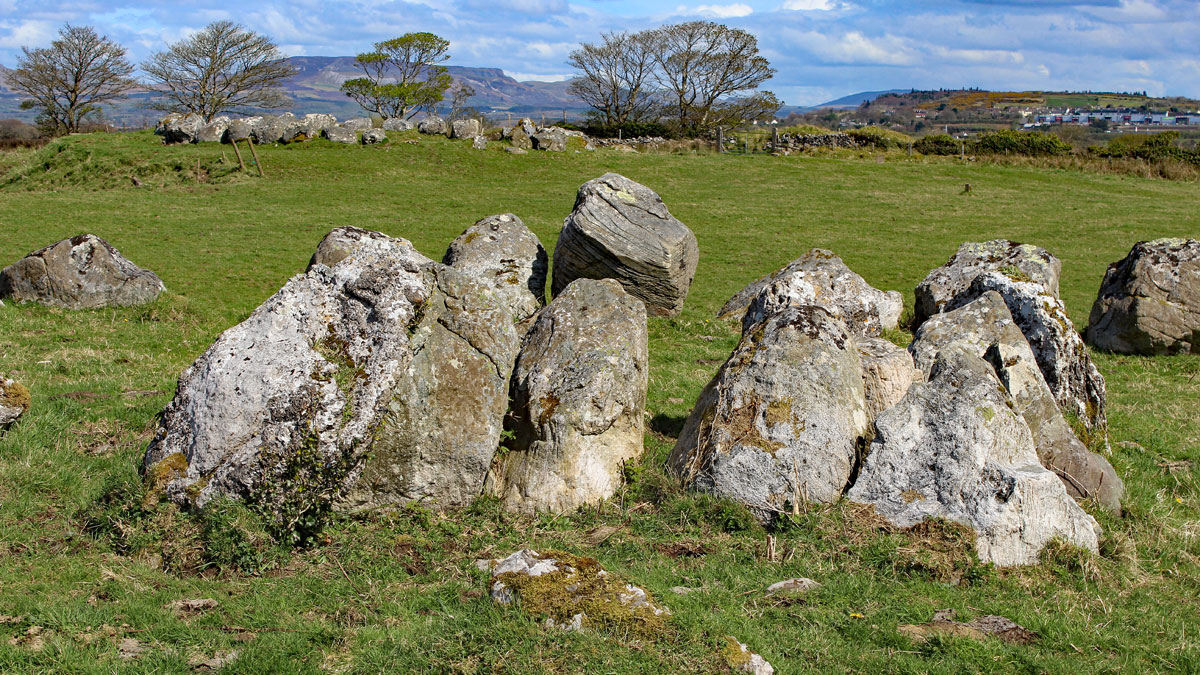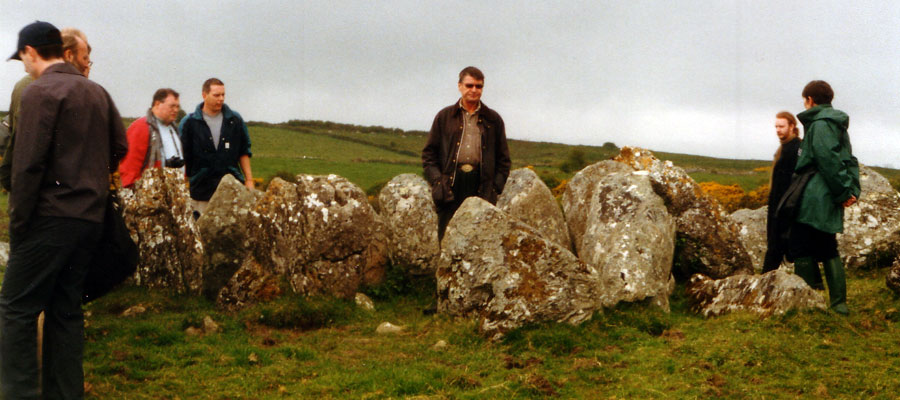Excavations at Circle 27: - Wood-Martin
No. 27. Situated to the southwest of 26 (dolmen-circle, or chambered cairn).
This is a double circle, and one of the finest of the series. The stones of the inner circle are small, and nearly covered by the clay. Those of the outer one are of large size, averaging six feet in height, and twenty feet in circumference. The diameter of the circle is sixty feet.
The number of stones in the circle is thirty-seven. The pillar-stones of the cromleac, sixteen in number, remain; but the covering-stone or stones - for it is probable there were more than one - have been destroyed."
- Petrie.
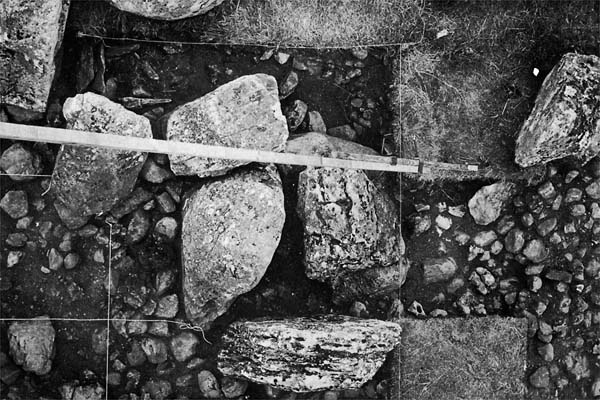
There is a plan of this circle in Fergusson's "Rude Stone Monuments," but it is inaccurate. The "cromleac" of which Petrie speaks, turned out, on examination by Colonol Wood-Martin, to be a cruciform arrangement of cists, or chambers, similar in ground-plan to - though ruder, apparently, in structure than - that found in several cairns.
This design which is found in the cairns at Loughcrew in Meath, and at Achill in Mayo, and Moytirra in Sligo, reached its consummation in New Grange. It is found also at Dowth, and at Maes Howe in Orkney, and, with modifications, in other cairns in Orkney, as well as in those of Caithness and Argyllshire.
The monument, however, which resembled most closely the Carrowmore example now under consideration, was, in its pristine condition, "Wayland Smith's Cave," in the County of Berkshire, a plan of the chambers of which will be found in the Norwich volume of the Congress of Anthropology and Prehistorical Archaeology, 1868, p. 46.
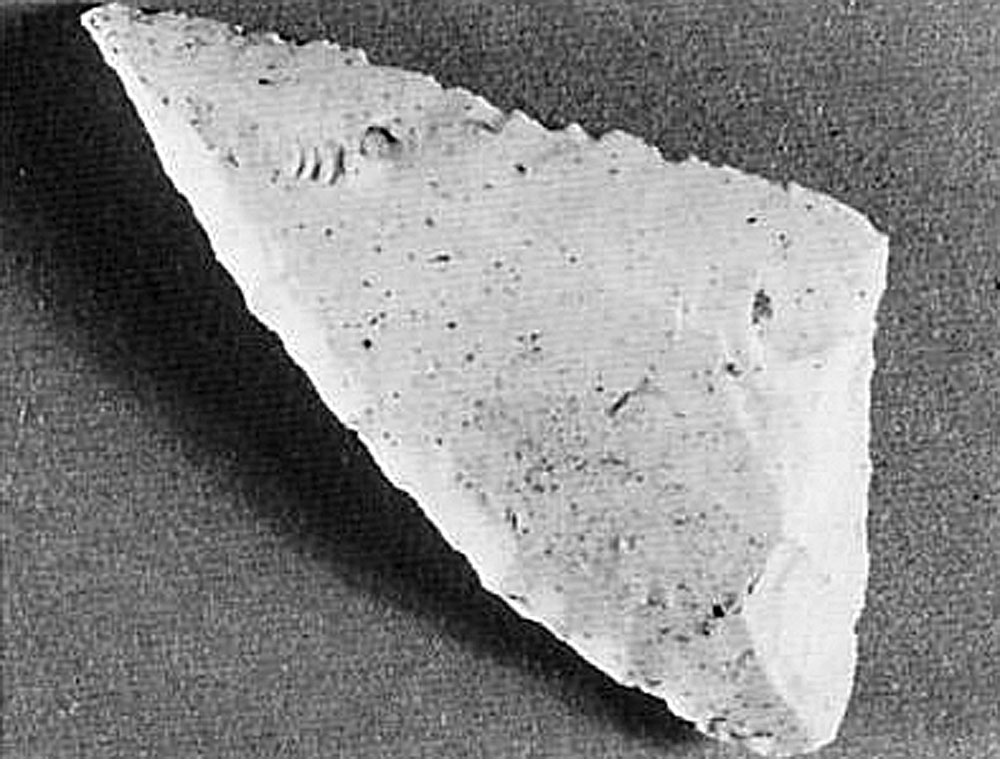
The idea present to the mind of the builder of that monument must have been identical with that which dictated the design of the Carrowmore one. The custom, and presumably the people who erected then both, was clearly one and the same, and the presence of the form in the apparently more ancient Carrowmore group, forms a link between them in the chain of the megalithic series which it is important to note. Cruciform chambers, as we shall see, are not unknown to German Archaeologists.
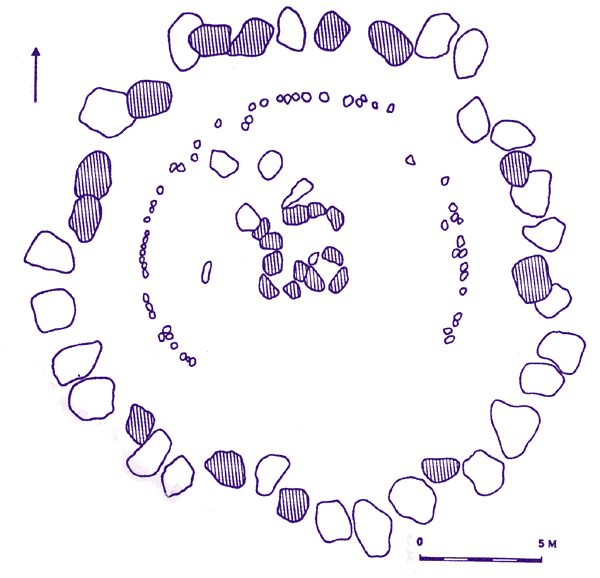
Colonel Wood-Martin gives (from the pencil of Mr. James Graves) a sketch and ground plan of the cist which formed the west arm of the cruciform arrangement. It was lined around - nearly to the surface of the ground - with narrow limestone slabs, and was flagged with a piece of calpy limestone, underneath which lay the undisturbed till. It may be considered a typical chamber." The covering-stone is wanting in this and all the other cists, and I do not feel sure that the roof was not completed in each case by overlapping thin flat stones. Had this been the case, however, one would have thought they would have been found in the chamber, but such a circumstance is not recorded. In the west cist were found: —
(a) 1 lb. 1.5 oz. weight of calcined human bones and fragments of crania.
(b) 1 lb. weight of uncalcined bones of animals and birds.
(c) Four fragments of uncalcined animal bones, probably those of a small cow.
(d) Seven back teeth (molars) and three front teeth (incisors) of an aged person.
(e) Seven back teeth and ten front teeth of an adult or adults.
(f) About forty fragments of cockle shells.
(g) A fossil cast of a shell from the limestone.
In the north cist (which would represent the shaft of the cross, and the axis of which lay rather northwest and southeast than north and south.) were found: —
(a) A few fragments of calcined human bones.
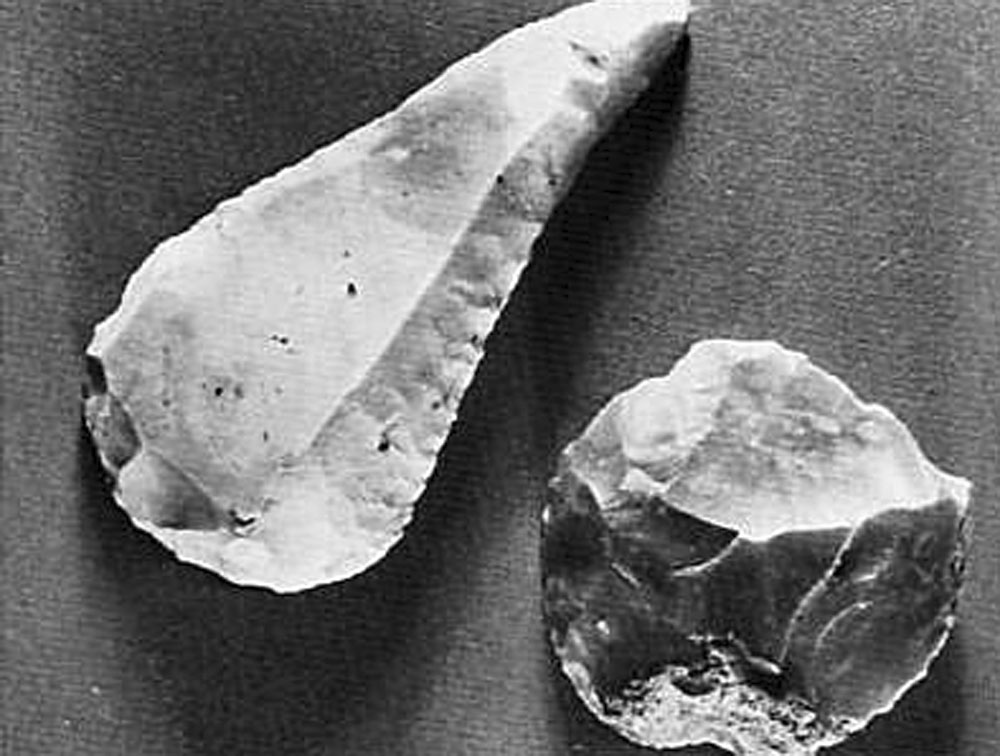
(b) Animal bones and a tooth of an animal, uncalcined.
In the east cist were found: —
(a) A few fragments of calcined human bones.
(b) Fragments of uncalcined human bones; part of a jaw, with molar; fragments of crania.
(c) Animal bones, molar tooth of ruminant, uncalcined.
(d) A few cockle and oyster shells.
(e) A hammer-stone (sandstone, weight 0.5 lb) with one of the ends showing traces of abrasion; another of the same material; three fragments of quartz, averaging about 0.25 lb. each; a very small piece of the same; and a quartz spar, clear as crystal—a very fine specimen—weight 2 oz.
In the central cist were found: -
(a) Calcined bones not exclusively human, fragments of crania, and two human molars.
(b) 1 lb, uncalcined human bones, and nine incisors, and seven human molars of different individuals also animal bones and the tooth of a ruminant.
(c) Numerous fragments of cockle and oyster shells, and a periwinkle shell.
(d) A small piece of white quartz and a rose-coloured pebble.
(e) Two small fragments of a cinerary urn, one of them showing traces of a pattern.
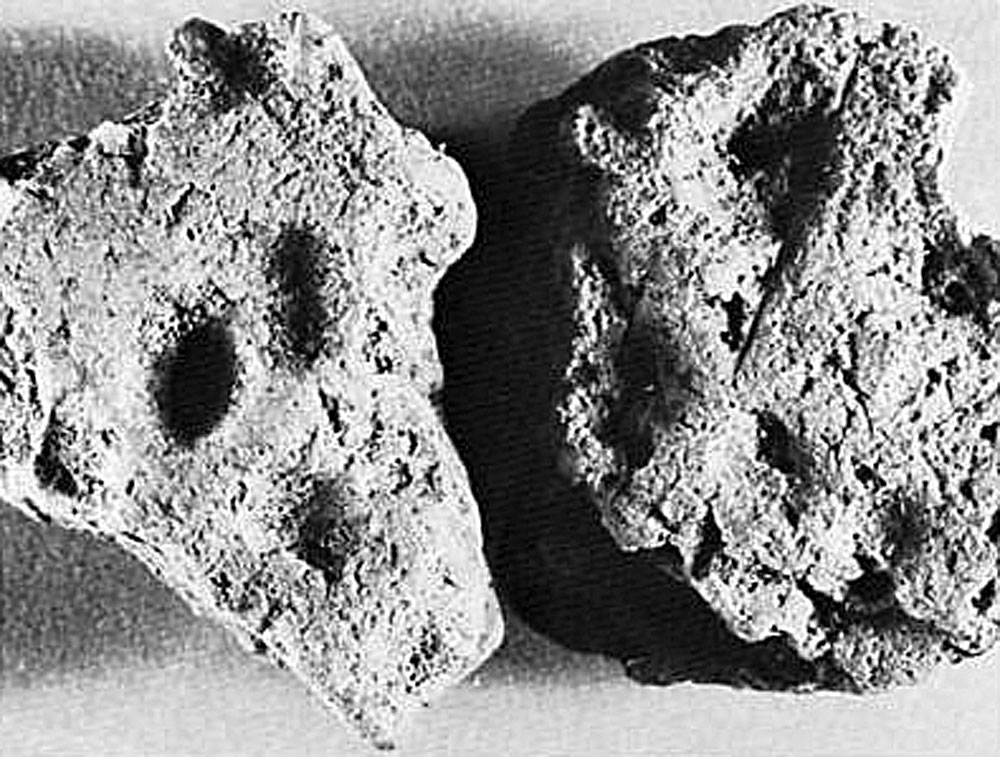
(f) Two pieces of worked bone, and palt of the acus of a bone pin.
In the south (or south-east) cist were found:-—
(a) 1 lb. 2 oz. weight of calcined bones, and two human incisors.
(b) Numerous uncalcined bones; eight human molars; six incisors; eight teeth of animals, five of them belonging to a dog; three fragments of an animal's jaw, with molar; and a few other fragments of animal bones.
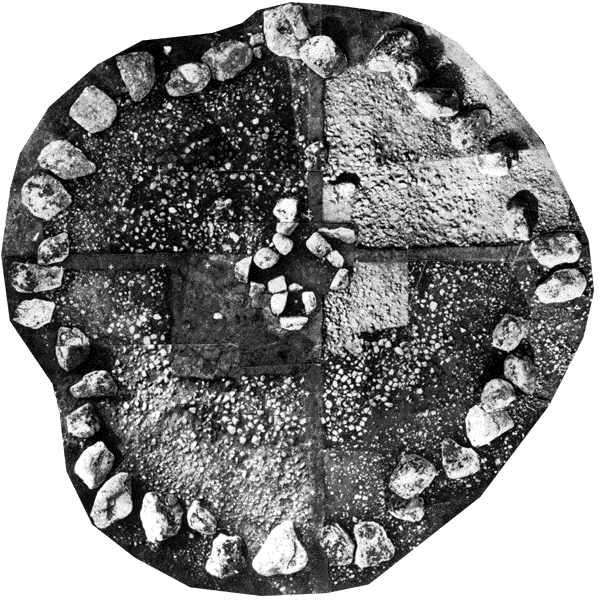
(c) Twelve fragments of cockle shells and a fossil.
(d) A fractured hammer stone, apparently split by intense heat; and two small pieces of white quartz.
(e) Small fragments of a cinerary urn, red in colour, thin, hard, well-baked, and highly ornamented. It seemed to have been subjected to great heat on its interior surface.
(f) Three fragments of a ring, presenting much the appearance of ivory, being hard and white, stated by Dr. Frazer to have been "cut with vast labour from a nodule, or portion of white flint, and as it was hydro-metric, it consisted originally of a form of hydrated quartz, or opal, which is found in the trap districts of the north of Ireland." It is further remarked that, "very often chalk flints are found around a fossil such as a Belemnitp, as a nucleus. If the fossil had either fallen out through natural agency, or had been extracted by these primitive ornament-makers, the formation of a ring, such as this, would have been greatly facilitated." A ring of lignite and another of glass are stated to have been found with a skeleton at Dunadry, Co. Antrim, and a ring of shale in a cinerary urn at Dundrum, Co. Down.
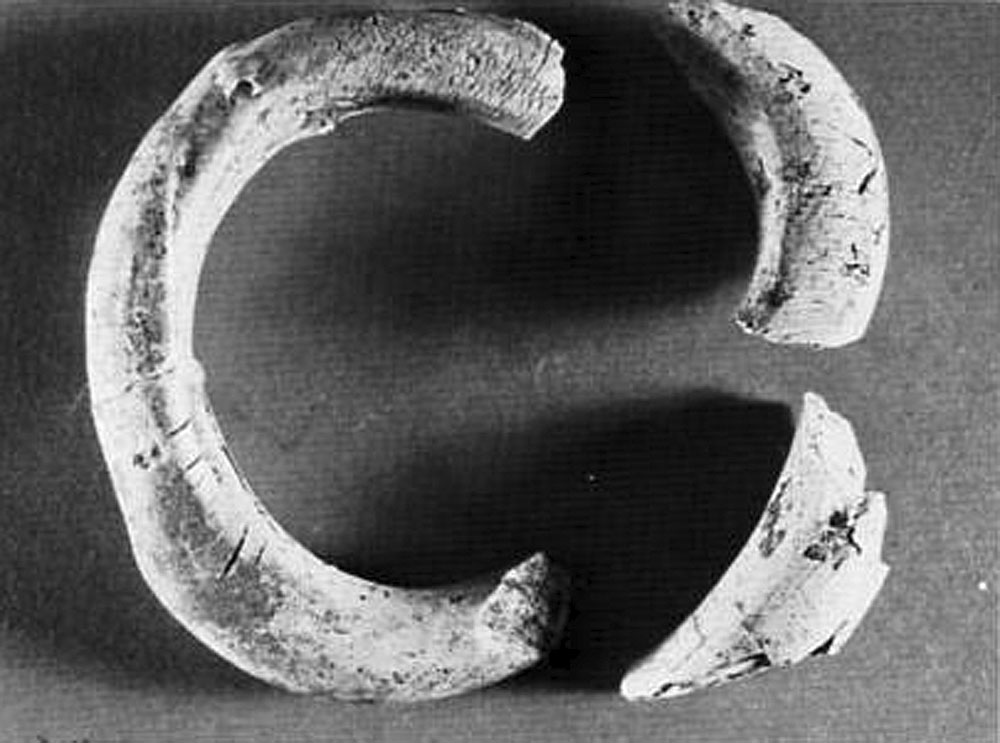
Photograph © Göran Burenhult.
(g) A piece of carved bone with pattern decidedly archaic. It is either walrus or whale bone.
(h) Fragments of the acus of a pin, and three pieces of a dagger-like implement made of horn, or cetaceous bone, greatly calcined.
(i) An arrow-head formed of the split bone of a large mammal: the convex and concave sides of the medial canal are still very observable.

